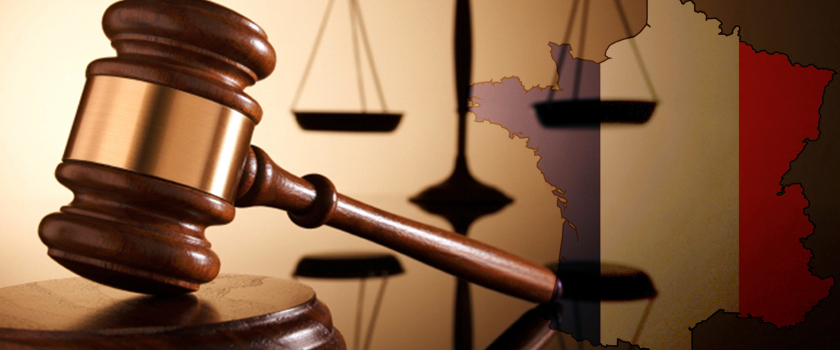2025 Offer Request a Quote Today and Grab a $50 Coupon for Free!
Ukraine is a country which is situated in Eastern Europe. You will be surprised to know that it is the second-largest European country after Russia covering land of 600,000 square kilometers and 230,000 sq mi. Around 40 million people are residing in this country.
It is surrounded by Russia to the East and Northeast. Belarus is located on the North side. In addition to it, Poland, Hungary, and Slovakia are situated on the West side and Moldova is situated on the Southeast.
The capital city of Ukraine is Kyiv and it is also one of the largest cities. Ukrainian is the primary language in Ukrainian and many people are also proficient in the Russian language.
Ukrainian is the language of the East Slavic subgroup of the Slavic languages. It is the official language of Ukraine. It is written in the Cyrillic alphabet.
This language has taken many loan words from neighboring Slavic nations such as Polish, Russian, Belarusian, and Slovak. The history of the Ukrainian language dated back to the Old East Slavic language of the ancient state of Kievan Rus.
The language was banned by the state of Russia due to some political reasons during the end of the nineteenth century and at the start of the Twentieth century.
Ukrainian has survived due to its rich heritage like folklore songs, and prominent poets like Taras Shevchenko and Lesya Ukrainka. However, at present, the Ukrainian language is at decline for a long period.
Approximately, there are almost fifty million ethnic Ukrainians that are spread around the world. Out of this number, 37.5 million live in Ukraine, and 77.8% live in Western Ukraine.
In Kyiv, Ukrainian and Russian both languages are spoken. The change of language took place when a large number of rural population and migrants from Western regions came to live in Ukraine with Kievans.
These people started to use these languages because they spoke them at home. In Central and Northern Ukraine, people speak the Russian language.
The Russian language is commonly spoken by urban papulation whereas, in rural areas, Ukrainian is commonly used. In the South and East of Ukraine, Russian is spoken in rural areas whereas, in Crimea, Ukrainian is not spoken.
It is expected that the use of the Ukrainian language will increase with the migration of the rural population into cities and the Ukrainian language will enter Central Ukraine. The literary rate of Ukrainian is also increasing because of the repercussions of hindering its development from government support.
Halych-Volhynia is a territory that is located in Modern-day Ukraine. Some of its parts are located in Poland, Belarus, and Lithuania.
When the territory of Halych-Volhynia broke up then the Ukrainians fell under the dominance of Lithuania and then Poland. Local rule and language are a part of Lithuanian rule.
Polish rule is accompanied by a transformation policy. The Polish language has a great impact on Ukrainian. The Ukrainian language developed by borrowing words from Turkish and Tatar.
Ukrainian language and culture flourished in the sixteenth and first half of the seventeenth century when Ukraine became part of the Polish-Lithuanian Commonwealth.
After that, Ukrainian became the official language of Ukrainian provinces of the Crown of the Polish Kingdom. Many schools were established at that time.
One of the important schools is the Kyiv-Mohyla Academy which was established by Orthodox Metropolitan Peter Mogila (Petro Mohyla).
During the revolution of the Khmelnytsky wars, Ukrainian high culture declined because Kyiv-Mohyla Academy was taken over by the Russian Empire.
Most of the remaining Ukrainian schools were changed from Polish to Russian because of the control of these countries. These countries were impacted by the surge of Polonization and Russification because of native speakers.
With time, the official language of Ukrainian provinces that are under the rule of Poland was changed to Polish whereas the Russian part of Ukraine spoke Russian widely.
In modern Ukrainian, East Slavs were called Rus ki and in the West, they are called Rus’ka mova. They are also known as Orthodox.
When Ukraine was under the rule of the Russian Empire, it was called Malorossiya. In this region, people speak a mixture of Rus which is a little Russian, and Southern Russian language which is the dialect of the Russian literary language.
During the nineteenth century, the Ukrainian language identified itself in the literary world of both Austrian Galicia and Russian-Empire Dnieper Ukraine.
The brotherhood of Saints Cyril and Methodius was a short-lived political society that lived in Kyiv at that time, it was a part of the Russian Empire.
This organization headed the Spring of Nations in Eastern Europe. It came up with the word for the Cossack motherland, Ukrajina which depicts the self-appellation of the nation of Ukrainians.
Many writers published works to show the Romantic tradition of Europe. It demonstrates that Ukrainian was not merely a language of the village however it is suitable for literary purposes.
In the Russian Empire, expressions of Ukrainian culture were not given due diligence because of the fear that a self-aware Ukrainian nation could be hazardous to the Empire.
In 1863, tsarist interior minister Pyotr Valuyev declared that there could be no separate language like Russian. Moreover, Ukrainian books were banned that was written by Alexander II's secret Ems Ukaz. It also included Ukrainian books accompanied by musical scores.
In 1847, Taras Shevchenko was expatriate and exiled for writing and painting for political purposes. After that in 1905 came the period of clemency, which was followed by another strict ban in 1914 that resulted in Russian occupied Galicia.
In the nineteenth century, the Austrian authorities favored Polish culture however, the Ukrainians were free to take part in cultural pursuits in Bukovyna and Galicia. In these territories, Ukrainian was immensely used in official documents and education.
The oppression by Russia mitigated the literary development of the Ukrainian language in Dnieper Ukraine, however, there was a literary exchange done with Galicia, and many pieces of work were published in Austria and it is smuggled to the East.
The name Ukrajins’ka mova of the Ukrainian language became accepted by the literary class during the late nineteenth century. At the end of the Russian Revolution in 1917, when Austro-
Hungary collapsed in 1918, and Ruthenians or Little Russians formed a body of national literature to assist a Ukrainian language educational system and to form an independent state called Ukraine.
With the assault of the Mongol Golden Horde, the Tartars came to settle on the North Coast of the Black Sea and made a Khanate based in Crimea.
Their offspring came after World War II by Stalin and they were not allowed to return until the collapse of the Soviet Union. The people that speak Crimean Tartar make up the third largest linguist group in Ukraine which is half percent of the population.
Ukraine’s borders were defined when it was the part of Soviet Union. The Crimea Peninsula became part of Ukraine by Nikita Khrushchev in 1954.
The area has seen multiple intrusions by Vikings, Ottomans, and Cossacks over the centuries. Different parts of the territory were recognized by internationally recognized borders.
They are in the control of the Polish-Lithuanian Commonwealth, the Russian Empire, and the Austro-Hungarian Empire. The Ukrainian territory that is present today was consolidated after World War II in the Soviet Union
According to the Census, 2001, approximately 67.5% of the population spoke Ukraine as their native language. The second most spoken language in Ukraine is Russian and it had approximately 29.6%, native speakers. Ukrainian people also spoke Russian as a second language.
Apart from Russian and Ukraine, the people of Ukraine speak 40 minority languages. These languages are a part of the former Soviet Union. The constitution of the country promotes the development of all the languages in the country.
Some of these languages include Rusyn, Belarusian, Romanian, Eastern Yiddish, Crimean Tatar, Armenian, Polish, Hungarian, and many others.
During the Soviet era, the population of Ukrainian speakers decreased drastically. By the mid-1980, s use of the Ukrainian language in public life was greatly affected.
After independence, the government of Ukraine came up with several linguistics programs in no time. They made laws to restore the image and use of Ukraine.
The Ukrainisation policy made Ukraine the sole language of Ukraine. The mode of education in the entire country is in the Ukrainian language. Moreover, different foreign films and television programs are subtitled and dubbed in Ukrainian.
Wrapping Up
The Ukrainian language ranked at number 26th in the total number of speakers around the world. Moreover, it is the second most widespread Slavic language after Russian.
Ukraine is a beautiful country situated in the middle of Europe. It has a rich culture. If you are planning to visit Ukraine, then you must know the primary Ukrainian language.
If you are taking the time in learning it then no worries. You can hire a professional translation agency. They can provide Impeccable Ukrainian translation services. Knowing the Russian language gives you an extra advantage in Ukraine.

Globalizing your website can be a hefty work, especially if your website supports any e-commerce application. Almost a decade ago,
Read more
MarsTranslation provides Japanese legal translation services for almost all kinds of legal needs. We have a huge team of translators
Read more
Documenting everything on paper is a must these days. It shows ownership and makes the person sure that their creation
Read more
Mars Translation provides French legal translation services for almost all kinds of legal needs. We have a huge team of
Read more
Mars Translation believes in bringing the best side of your business forward and that is why we have multiple international
Read more
Mars Translation is known for providing world class Japanese website translation services in a multitude of languages. We have a
Read more
Not everyone can translate like a professional from the very beginning of their career. Some people are gifted, while others
Read more
Mars Translation provides one of a kind Spanish Legal Translation Services. We have a team of native Spanish linguist who
Read more
At the end of the year comes Christmas – a time for extravagant feasts and celebrations. In the spirit of
Read more

